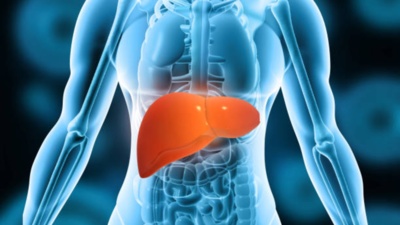Fatty liver is more than just a liver problem—it’s a big red flag for your overall heart and metabolic health. You may think it’s harmless fat sitting quietly in your liver, but it’s not. Non-alcoholic fatty liver disease (NAFLD), which is now being renamed to metabolic-associated fatty liver disease (MAFLD), is strongly linked to issues like high blood pressure, type 2 diabetes, obesity, and heart disease. When fat builds up in your liver, it messes with how your body handles insulin and sugar, which can increase inflammation and raise your risk for strokes and heart attacks. The scary part? You may not even feel symptoms until it’s too late.Recently, Cyriac Abby Philips, popularly known as TheLiverDoc, posted about fatty liver, how it is related to cardiometabolic health and simple tests to know if one is healthy and fit or not.“The best treatment for fatty liver disease is to prevent it by improving your cardiometabolic health. Here is a small list of tasks that I advise my patients to undergo to assess their “fitness” before I prescribe exercise for treating fatty liver,” he has posted on X.He recommends the following exercises:
The One-Minute Sit-to-Stand Test
The One-Minute Sit-to-Stand Test (1-MSTS) is a quick and simple way to assess lower body strength and functional capacity. To perform it, sit on a sturdy chair about 45 cm high with your arms crossed over your chest. On the signal “go,” stand up fully and sit back down repeatedly for 60 seconds—without using your hands. Count how many full stands you complete. For adults aged 45–59, fewer than 14 stands indicates low functional capacity, while more than 20 stands is considered a good result. It’s a powerful home test to check mobility, endurance, and overall leg strength.
The Three-Minute Step Test
The Three-Minute Step Test is a simple way to evaluate cardiovascular fitness and recovery. Using a 12-inch (30 cm) step or stair, step up and down in a rhythmic pattern—up-up, down-down—for 3 minutes at a pace of 24 steps per minute. Immediately after, sit down, locate your pulse, and count your heartbeats from 30 to 60 seconds after exercise. For individuals aged 40–49, a recovery pulse over 96 beats per minute may indicate reduced physical fitness and strength due to inactivity. A recovery pulse at or below 80 bpm is considered a good sign of cardiovascular health.
The Forearm Plank Hold
The Forearm Plank Hold is a simple yet effective test of core strength and muscular endurance. To perform it, lie face down on the floor with elbows directly under your shoulders. Lift your body so it forms a straight line from ears to heels, engaging your core and keeping hips level—no sagging or lifting. Hold the position as long as you can. For adults aged 40–59, holding less than 30 seconds may indicate poor fitness, while holding between 90 to 120 seconds reflects very good endurance. This test helps gauge core stability, a key element in overall functional fitness.
The Wall-Sit Test
The Wall-Sit Test, also known as the Isometric Squat Test, evaluates lower-body strength and endurance. To perform it, stand with your back against a wall, feet shoulder-width apart and about 60 cm forward. Slide down until your knees form a 90° angle, keeping your back flat against the wall and arms crossed. Hold this position as long as possible without breaking form. For adults aged 40–59, holding for less than 30 seconds indicates poor lower-body fitness, while holding for more than 75 seconds reflects strong endurance. This test helps assess leg strength crucial for mobility and injury prevention.
The Modified Push-Up to Fatigue test
The Modified Push-Up to Fatigue test evaluates upper body and core strength, particularly for adults aged 40–59. To perform it, start on your knees with hands slightly wider than shoulder-width apart. Lower your body until your chest nearly touches the floor, then push back up, keeping a straight line from head to knees. Repeat continuously until you can no longer maintain proper form. Completing fewer than 10–12 reps suggests low strength, while more than 25 is considered above average. This test is a simple yet effective way to measure muscular endurance and assess functional fitness in middle age.He also suggests to first, stop immediately and seek medical attention if you experience dizziness, chest pain, or unusual shortness of breath during any activity. These quick tests are not a substitute for a professional, graded lab test, but they can reveal weak links in your everyday physical ability. If you fail more than one of these simple benchmarks, it’s a clear sign that you need to prioritize regular physical activity. Investing in movement today may significantly impact your long-term health, quality of life, and longevity. It’s never too late to start taking care, he says.


